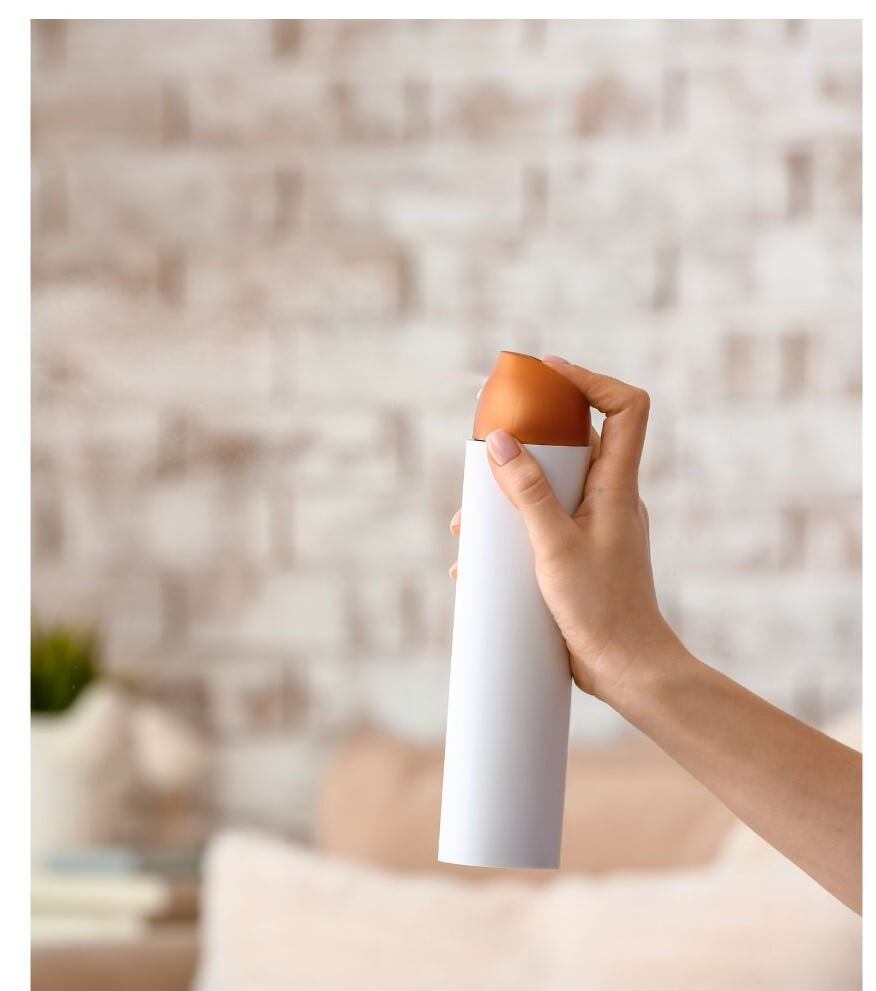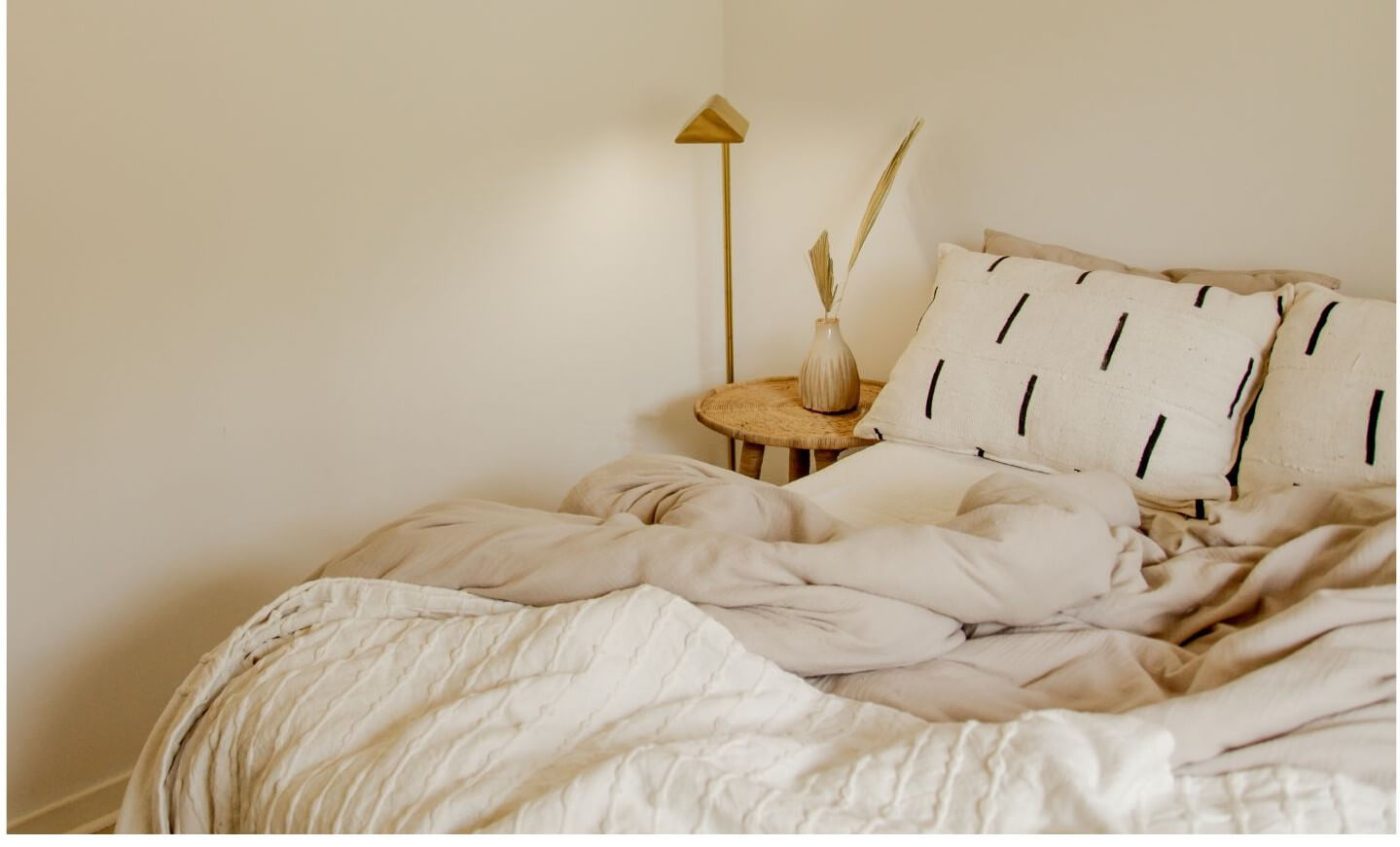Create a Toxic-Free Sanctuary in Your Bedroom: Simple Steps to Detox
Being in the comfort of our own homes can be a daily refuge from the hustle and bustle of life. The bedroom is your safe haven, a place of relaxation and peace. But with the growing number of toxins and chemicals found in our everyday household items, it has become increasingly vital to find ways to reduce the amount of harmful substances we’re exposed to.
From our furniture and clothing, to the paint on our walls, these toxins can interfere with sleep, hormonal balance, and overall energy levels. But have no fear! This post is all about being proactive and taking steps to create a toxic-free sanctuary right in your bedroom. From understanding what household toxins exist to exploring how to remove them, you’ll get all the information needed to detoxify your space and benefit from improved sleep, hormone balance, and energy levels.
To learn how to optimize your hormones, get rid of toxins, and so much more, join us inside the Superwoman Circle.
Chemical off-gassing from your mattress
Most of the memory foam mattresses today are made with polyurethane foam. And while we love the comfort and convenience of these options, they come with potential toxic pitfalls.
Industrial strength chemical adhesives and flame retardants are used to bond layers together and to meet federal flammability requirements. These chemicals used during the manufacturing process then release small amounts of gasses into the air that make their way onto our skin, and into our air.
There’s a good chance your polyurethane foam mattress is emitting VOCs, or volatile organic compounds, which are proven to be harmful to human health. Recent findings suggest an increased amount of off-gasses are created by sitting in your bed. This also means when you find yourself near your mattress, it releases fewer harmful chemicals inside the mattress as often as they did in a normal environment.
Listen: Can Toxic Fabric Impact My Health?
Off-gassing linked to high toxic load & illness

The more toxic chemicals you’re exposed to at home, the greater your toxic burden. And the higher your toxic burden, the greater the chance you’ll experience negative effects. Fetal exposure to some toxins, for example, has been shown to cause reproductive harm in women as well as changes in menstrual cycles and fertility (1).
Other problems where a high toxic load can play a role are:
- Hormone imbalance or endocrine disorders
- Multiple chemical sensitivity
- Allergies and asthma
- Infertility
- Autoimmune disease
- Hashimoto’s thyroiditis
- Reduced immune function
Related: What Causes Hormone Imbalance?
Toxic chemicals lurk elsewhere in your bedroom, too
Toxins and chemical flame retardants don’t just hide in your mattress. They also exist in other unexpected places, such as the varnish used in furniture (like your bed frame and nightstand), fragrances in air fresheners, and flame retardants in curtains and carpet.
These products release even greater amounts of endocrine disruptors and VOCs into the air when exposed to sunlight and heat.
For simple ways to do a household detox, learn more in this post.
Volatile Organic Compounds (VOCs)
According to the Environmental Protection Agency, indoor air quality can be up to five times more polluted than outdoor air as a result of VOCs (2). VOCs can cause symptoms such as eye, nose, and throat irritation, headaches, nausea, dizziness, fatigue or asthma attacks (3). They also contribute to indoor air pollution which can lead to long-term health problems.
Research suggests that the associated risks of indoor & outdoor toxin exposure may include headaches and fatigue, cancer, reproductive system damage, autism, and lower IQ (4,5).
Related: Healing Hormone Imbalance: What You Should Know About Xenoestrogens
Look for Oeko-Tex or other certifications
Oeko-Tex is an internationally recognized body focusing in particular on protecting consumers from harmful chemicals. Their standards test for more potential toxic chemicals, not just VOCs. They also look at things such as dyes, allergens, formaldehyde levels, phthalates, pesticides, and more.

When choosing a mattress, look for one that demonstrates a commitment to health by backing up their claims and use of materials.
Non-toxic mattresses also use materials that are Global Organic Textile Standard (GOTS) or Global Organic Latex Standard (GOLS) Certified to ensure the use of organic and non-toxic latex and textiles. You can also look for certifications like Greenguard Gold, which means products are tested for lower levels of toxic substances & chemical emissions.
Switch out your bedding materials
Choose natural fabrics like cotton, linen, and bamboo for your sheets and blankets. Synthetic fabrics like polyester contain microplastics and are often treated with additional chemicals that can irritate the skin.
Bedding is an area of the home we should pay careful attention to because it is so close to our skin and breathable air during sleep. A simple solution to sleep without the presence of possible off gassing is to choose natural fiber sheets and blankets like organic cotton or wool.
More ways to decrease toxins and VOCs in your bedroom
- Ventilate your bedroom and open the windows regularly to allow fresh air to circulate.
- Invest in an air purifier for added protection and cleaner air quality.
- Replace synthetic furniture like particle board with natural options such as solid wood.
- Use natural scents like essential oils instead of air fresheners.
By following these simple steps you can detoxify your bedroom to create a safe haven free from harmful toxins and chemicals. You’ll be able to sleep sounder at night knowing that you’re creating a healthier environment for yourself and those around you.
Resources
- https://academic.oup.com/humrep/article/28/12/3337/691545
- https://www.epa.gov/report-environment/indoor-air-quality
- https://www.ncbi.nlm.nih.gov/pmc/articles/PMC7914726/
- https://www.ncbi.nlm.nih.gov/pmc/articles/PMC10038118/
- https://www.bmj.com/company/newsroom/early-life-exposure-to-common-pesticides-linked-to-small-increased-risk-of-autism-spectrum-disorder/
